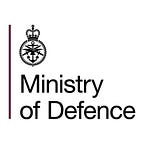100 years of Royal Navy Carrier power
The Royal Navy has been at the forefront of carrier tactics and technology for the past century. Here is how maritime based airpower has shaped naval warfare in the last 100 years
1917 — Early pioneers
In August 1917, Squadron Commander Edwin Dunning becomes the first person to land an aircraft on a moving ship — HMS Furious — paving the way to the modern aircraft carrier.
Dunning performed the daring feat again, but unfortunately on his third attempt an engine failure caused the aircraft to crash taking him into the sea with it. He was knocked unconscious and drowned in his cockpit. Dunning’s huge sacrifice led to major steps in maritime tactics.
Months later, HMS Argus was launched, the first aircraft carrier with a full-length flight deck.
1940 — The Carrier comes of age
On the night of 11 November 1940, 21 Fairey Swordfish torpedo bombers took off from aircraft carrier HMS Illustrious. The aircraft from the Royal Navy Fleet Air Arm were given their target; the Italian warships anchored at the port of Taranto.
A Fairey Swordfish is a torpedo bomber which was operated by the Fleet Air Arm and the Royal Navy. This aircraft was in frontline service throughout the Second World War.
The events shifted the balance of power in the Mediterranean — with the sinking of HMS Prince of Wales and the Japanese attack on Pearl Harbour the following year, the aircraft carrier replaces the battleship as the ship of the future.
1944 — British Pacific Fleet
As the war in Europe draws to a close, the British Pacific Fleet is formed with naval aviation at its core. Royal Navy carriers withstand kamikaze attacks to successfully strike enemy forces, notably at Palembang and Okinawa.
1945 — Jet age innovation
In 1945, legendry naval test pilot Eric ‘Winkle’ Brown lands a jet aircraft on a carrier for the first time. The Royal Navy is at the forefront of a series of subsequent technological developments, including the angled flight deck and steam catapult.
Eric ‘Winkle’ Brown flew 487 different types of aircraft and many of them as a test pilot — meaning that many of the designs were experimental and in some cases very dangerous.
1947 — Cold War
Royal Navy carriers are in action during the Korean War and Suez Crisis. Britain’s planned withdrawal from East of Suez leads to the cancellation of the CVA-01 carrier project and a steady reduction in the Royal Navy’s carrier force.
CVA-01 was a proposed UK aircraft carrier designed in the 1960’s. Like the HMS Queen Elizabeth Aircraft Carrier today, the CVA-01 would have taken the same name, but she was the ship that never was.
1982 — The Age of Invincible
The arrival of the jump jet opens the way for a new generation of small carriers. Sea Harriers flying from HMS Hermes and HMS Invincible prove decisive in defending the Falkland Islands from Argentina in 1982.
The Invincible-class carriers also support operations in Bosnia, Kosovo, Iraq and Sierra Leone.
The Harrier is a vertical take-off and landing (VTOL) jet, or more casually known as “jump jet”. It doesn’t need a long runway and can operate from small spaces. Most impressively it can hover like a helicopter, fly sideways and go backwards.
2010 — The Carrier gap
The Harrier is withdrawn from service in 2010 and the Royal Navy decommissions the Invincible-class carriers.
The US and other allied carriers continue to play an important role in coalition operations in Afghanistan, Libya and Syria. During conflict in Afghanistan, which is landlocked with 300 miles to the nearest coast, most of the coalition’s airpower was delivered by US Carriers operating in the North Arabian Sea.
2020 — New era of maritime power
In September 2020 HMS Queen Elizabeth embarks the largest air group of fighter jets yet put to sea.
With the advent of the UK Carrier Strike Group, a new era of British maritime power begins.
2021 — UK Carrier Strike Group’s first operational deployment
The deployment of the UK Carrier Strike Group this summer will allow the UK to champion prosperity and trade, and to engage with our allies and partners in support of international peace and stability. This is an essential component of Britain’s global outlook.
